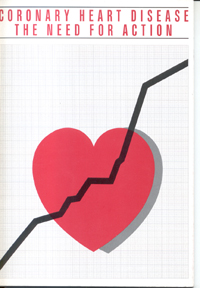Sign up to our newsletter Subscribe
Challenges and Solutions for Budget Impact Analysis of Gene Therapies

At the start of the 1980s, coronary heart disease (CUD) appeared destined to become the United Kingdom’s ‘disease of the decade’. Comparisons between nations had revealed that the countries of the United Kingdom were becoming increasingly isolated at the top of the international…
At the start of the 1980s, coronary heart disease (CUD) appeared destined to become the United Kingdom’s ‘disease of the decade’. Comparisons between nations had revealed that the countries of the United Kingdom were becoming increasingly isolated at the top of the international league table for CHD mortality. As a result there were calls from many quarters for urgent action to bring the death rates down. The measures proposed by the experts – primarily, appropriate responses to the established risk factors for the disease – became a topic of growing interest for the general media. Coverage was increasingly given to the changes required in smoking, dietary and other habits and to the ways in which the desired objectives might be achieved. Yet just as public awareness of the problem was reaching new heights, reports began to emerge about the discovery of a new and lethal virus affecting mankind. Subsequently, the reporting of medical issues in the lay press and by the broadcasting media has been dominated by the human immunodeficiency virus and its fatal consequence, acquired immune deficiency syndrome.
This development does not, however, alter the fact that CHD remains the nation’s most substantial contemporary healthcare problem. In England and Wales, CHD was responsible for 153, 084 deaths during 1988 – equivalent to nearly 27 per cent of total mortality. More specifically, it is a major cause of premature death, especially for males. The 1988 CHD death toll among persons aged 15-64 years generated a loss of potential working life estimated at nearly 240,000 years and males accounted for 82 per cent of the total. Alternatively. CHD caused the death of one person under 65 years of age every 19 minutes throughout 1988.
The magnitude of the problem posed by CHD is reflected in the size of the research effort aimed at clarifying the mechanisms underlying pathogenesis and at discovering more effective treatments. Table 1 shows that the pharmaceutical industry, the British Heart Foundation (the largest charity supporting heart research) and the government via the Medical Research Council, spent an estimated £150 million on cardiovascular system research in 1987 – or a cumulative total for the 1980s so far of £730 million. It is, however, preventive action to cut the incidence of CHD that provides the fundamental long-term key to reducing the substantial National Health Service and other economic and social costs generated by the disease. The objective of this paper, which updates parts of an earlier OHE publication on the topic (Wells, 1982), is to quantify these resource implications. In so doing it underscores the pressing need for the public health education campaign – ‘Look after your heart’ – launched in Spring 1987 by the Department of Health and the new Health Education Authority.
Coronary Heart Disease: The Need for Action
